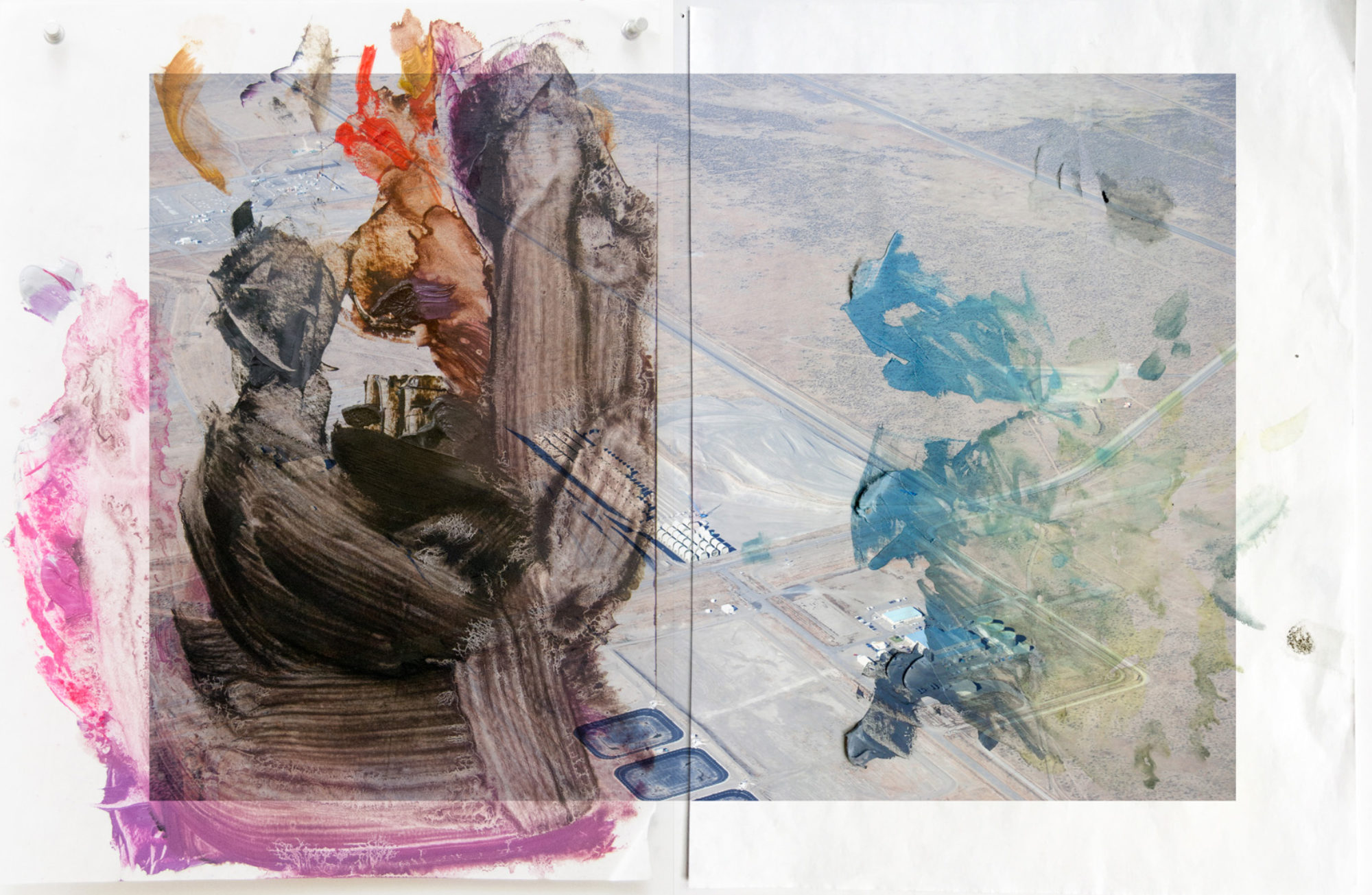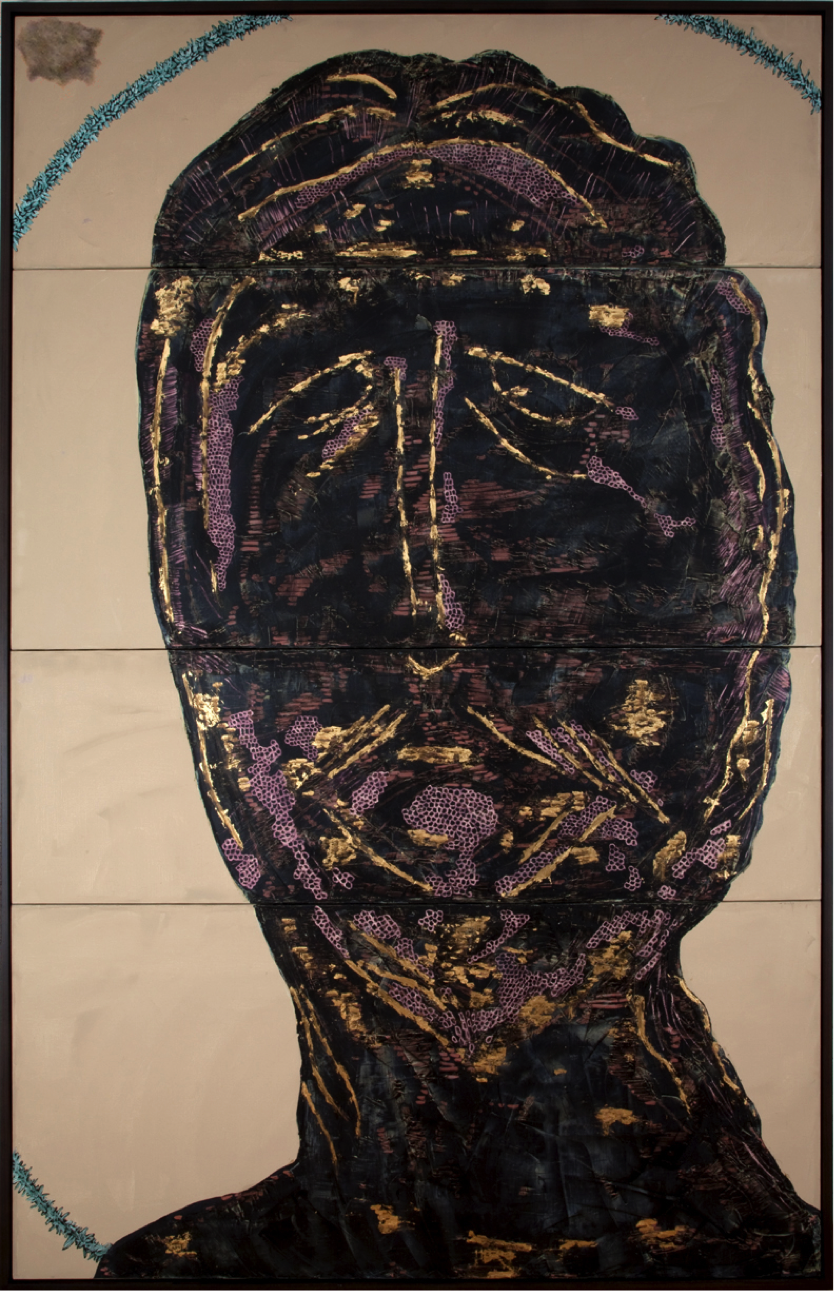Mother and Child, 2017, oil & wax on linen, 93″x61″.
Saviour, 2008-12, oil and wax on linen with gold leaf, 101″x64″.
Dormition, 2017, oil and wax on linen with gold leaf on wood, 63″x105″.
Father Ed Farrell, 2015, oil and wax on linen with gold leaf, 15″x13″.
Father Paul Berg, 2015-16, oil and wax on linen, 14″ x 11″.
Oratory Fathers, 2015, oil and wax on linen, 10”x54”.
Church Works: Over the past decade an art studio of decent size was increasingly being jeopardized to the expanding New York real estate market, on steroids—if you will, that I had to discern (using that word again) how to make larger size paintings for sacred spaces yet have them to be easily portable, storage friendly and sturdy enough to stand alone in very large vaulted churches. As such, panel works were the answer. Beginning with Dormition, an eight panel piece, plus its gold frame, it can be easily displayed in almost any location. Many Churches are set in stone, so to speak, with the art they already have (which are actually, to borrow from Duchamp, ready-mades in plaster). This piece invokes the Orthodox tradition of Mary not dying but at sleep, in this work on a bed of honeycomb, the work of the community holding her gently. Honeycomb is also present in Saviour and Mother and Child. The former with the face of Christ, an inscape of sort, of the hive, that is, the church. The latter is bathed in a blue light and if you stare hard enough her caressing hand with the head of the child is present. At one installation of this work it had to stand on a side pew where I witnessed several people placing their hand on the painting (something you couldn’t do at a museum!) and following the hand’s outline to the Christ Child.
All these works at one time or another were exhibited in several churches across the city and are now in storage awaiting another invitation. Some had good runs, others didn’t. It is now a new mission (and honestly a new weight) that I carry to dialogue with various church communities who either are not aware of the streams of contemporary art or are just simply disdainful of an outsider coming in with different creative visions (which I can to some degree understand). I always try to convey, as Pope Benedict once said: “Next to the saints the art which the church has produced is the only real apologia for her history.” And, as such in my humble opinion, every generation needs to make its own contribution to this history, we can’t afford to simply rely on the past, a 19th or 16th century block of works (pic any period you like). The church isn’t a museum but a community that must breathe the present along with its past.
Religious Formation Portraits: Within my first week at Sacred Heart Seminary (Detroit,1977) a frumpy kind priest knocked at my door to introduce himself. Father Edward Farrell was the spiritual director at the seminary with several books under his name. He noticed a book of poems by the Jesuit Gerard Manly Hopkins on my desk. A conversation started that lasted intermittently until his death a few years ago. During the off-summer months I lived at St. Agnes, a neighboring parish from the Seminary along 12th Street (where the riots started ten years earlier/now named Rosa Parks Blvd). I very much doubt the parish exists today but back in the late 70s and 80s Father Farrell was the beloved pastor there and—like St. Agnes—a lamb adorates him.
After graduating from Sacred Heart I entered the Major Theological Seminary of St. Johns a few hours outside of Detroit. The Rector was a vibrant priest, Kenneth Untener, who was bringing change to the seminary that eventually cost him his job, hence the stitching or silencing of his Christian vision (he was then sent to be Bishop of Saginaw, Michigan; an exile of sorts). When he died he was eulogized as “Francis before Francis.” Joining this formation team were Father Tom Moore and Sister Liz Pickens. They were responsible for the likes of me. I remember them so fondly, and the real purpose of these portraits, for the formation they offered me, especially to leave the Seminary and to take the risk to paint. Studying in Jerusalem with Tom he took me to Bethany and quoted (or should I say pray?) the words of Jesus to Lazarous: “unbind him and let him go free.” Liz taught all of us seminarians the utmost importance of women in the church. They are all deceased now and I miss them so much.
Even though I was studying for the priesthood for the Archdiocese of Detroit I did most of my studies at the Jesuit University of Detroit. That explains the Hopkins book. My trypitch of Ignatius, Hopkins (reference his poem The Blessed Virgin compared to the Air we Breathe) and of course our current Jesuit Pope Francis. These portraits and more are a personal memoir of the holy men and women that helped me discern my own paths in life and the vocation of painting, a word rarely used these days but one I was encouraged to embrace.
After leaving Detroit to Boston I eventually settled in New York in 1987. I immediately sought out a Catholic parish to worship with and raise my family. I laid my new roots, so to speak, with the Oratory Church of St. Boniface in Brooklyn. These diocesan priests looking for a permanent home for their Oratory, like St. Paul, were shipwrecked. They’re vision for a true welcoming Catholic Christian community bore fruit in two thriving parishes that welcomes all today. In my rendering, across their bow, an octopus—that creature of high intelligence and willingness to change—became my visual metaphor for these Oratorian priests.
Link to artist’s work: http://www.alfonseborysewicz.com






